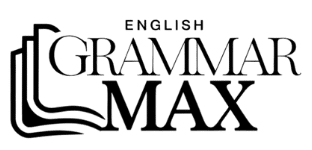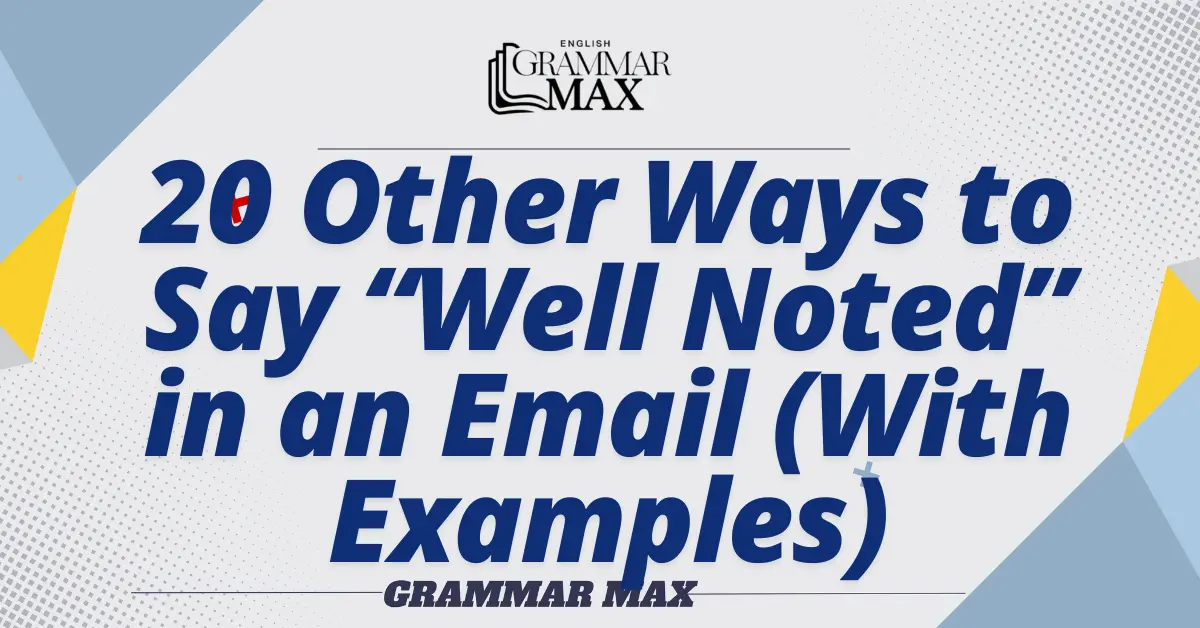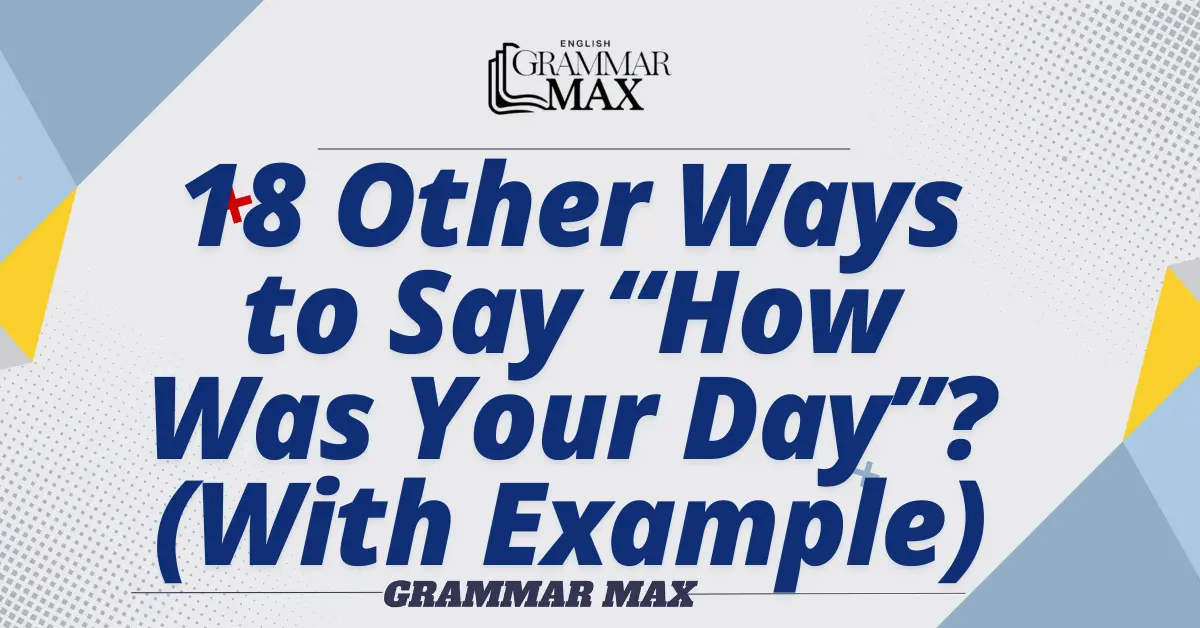In the professional world, how you agree is crucial in maintaining positive working relationships and fostering clear business communication. Whether in emails, meetings, or casual conversations, expressing agreement or approval can be done in a way that reinforces professionalism and respect. You’re in the right place if you’re wondering what to say instead of “sounds good” in your workplace. Below, we’ll explore other ways to say “sounds good” professionally and provide examples that fit perfectly into your corporate interactions.
Is “Sounds Good” Professional?
While “sounds good” is commonly used, it can sometimes feel too casual for formal settings, depending on the context. In more corporate environments, using polished alternatives can enhance the tone of your communication. How to say “sounds good” professionally involves slight adjustments in phrasing to fit different levels of formality.
Alternative Ways to Say “Sounds Good”
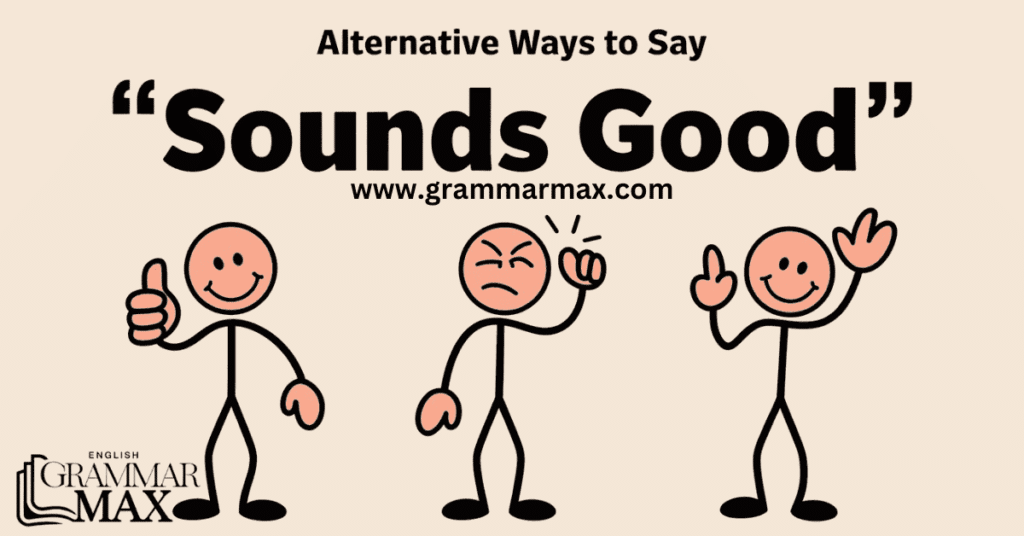
Here are the 25 ways to say “Sounds Good” professionally:
- That works for me
- I’m on board with that
- I agree with your plan
- That sounds like a plan
- I’m happy with that
- That’s acceptable to me
- I can agree with that
- That’s fine by me
- I’m in agreement
- I concur with your assessment
- Agreed
- That sounds like a good approach
- That seems reasonable
- I’m okay with that
- That’s perfect
- I support that
- Let’s go with that
- I approve of this
- We’re aligned on this
- That’s a good plan
- I’m okay with that
- That will do
- I endorse this approach
- I’m in favor of that
- I give my consent
Expressions Of Delight
“That sounds fantastic,” “I’m thrilled with that,” “This is excellent,” “Absolutely brilliant,” and “I couldn’t be more pleased” are just a few ways to express delight in the workplace. Using these phrases in conversations or emails shows enthusiasm and positivity, reinforcing professional approval while maintaining polished communication standards in various business settings.
1. That Works for Me
This is a direct yet professional way to convey agreement. It’s best used when confirming plans or decisions with a colleague.
Best Use:
“That works for me” is perfect for when you’re agreeing to a schedule or plan.
Example:
Email to Colleague: “Hi Sarah, Thanks for adjusting the meeting time. That works for me, and I’ll be there at 10 a.m. sharp. Looking forward to our discussion. Best regards, James”
2. I’m on Board with That
This is another way to say “sounds good” that communicates enthusiasm and willingness to proceed with an idea or proposal.
Best Use:
Great for expressing mutual agreement in team settings.
Example:
In a Team Meeting: “After hearing your proposal, I’m on board with that. I believe it aligns well with our broader objectives.”
3. I Agree with Your Plan
When you need to confirm consent to someone’s approach or strategy, this phrase shows clarity and respect for their ideas.
Best Use:
Use this in emails or meetings when reviewing project plans.
Example:
Email to Project Lead: “Hi David, I’ve reviewed your outlined strategy, and I agree with your plan. Let’s proceed as discussed. Best regards, Amanda”
4. That Sounds Like a Plan
Slightly more casual but still professional, this option is great for confirming decisions or tasks.
Best Use:
This is ideal when agreeing to a schedule or next step in a conversation.
Example:
Email to Client: “Hi John, Thanks for the proposal updates. That sounds like a plan, and I’m excited to see how this develops. Best, Lisa”
5. I’m Happy with That
This phrase is warm and adds a personal touch to your professional communication, making it perfect for formal interaction that still needs a touch of personality.
Best Use:
Use this in workplace conversations where you’re expressing approval.
Example:
Reply in a Meeting: “I’m happy with that, and I think it meets our team’s goals perfectly. Let’s move forward.”
6. That’s Acceptable to Me
This phrase is more formal and might be used in contracts or negotiations, emphasizing consent and agreement in a polished manner.
Best Use:
Use it when giving a green light during formal business dialogue.
Example:
Negotiation Email: “Dear Mr. Roberts, After reviewing the terms, I believe that’s acceptable to me. We can move forward with the agreement. Kind regards, Susan”
7. I Can Agree to That
This is a confident yet professional way to express consensus.
Best Use:
Perfect for moments when you need to express clear business consent in meetings or formal exchanges.
Example:
Reply to Team Member: “After going over the details, I can agree to that. Let’s move ahead with the implementation.”
8. That’s Fine by Me
Slightly casual yet professional, this phrase works well in informal workplace conversations while still maintaining a level of professionalism.
Best Use:
Great for quick decisions or minor agreements.
Example:
Quick Chat in the Office: “Sure, if we need to push the meeting to 4 p.m., that’s fine by me.”
9. I’m in Agreement
This is a simple yet effective way to convey shared views. It’s suitable for formal written and spoken interactions.
Best Use:
Use in situations where expressing consensus is key.
Example:
Email to Senior Team Members: “Dear All, After our meeting, I’ve reviewed the proposals and I’m in agreement with the final choice. Let’s proceed with the outlined plan. Regards, Mark”
10. I Concur with Your Assessment
If you want to use a phrase that conveys a higher degree of formality and professionalism, this is an excellent choice.
Best Use:
Use in presentations or formal business settings when expressing agreement with complex information.
Example:
Formal Meeting with Stakeholders: “Thank you for your analysis, Andrew. I concur with your assessment, and I believe this is the best path forward for the project.”
11. Agreed
Concise and to the point, this phrase is ideal for emails or conversations when you need to confirm that you’re on the same page with someone.
Best Use:
Use it in short responses to express agreement in emails or chats.
Example:
Reply in Email: “Agreed. I’ll go ahead and notify the team. Thanks, Michael”
12. Sounds Like a Good Approach
This option softens the original phrase while maintaining a professional tone. It implies that you are on board with a course of action.
Best Use:
Use when approving a proposed method or course of action.
Example:
Reply in Strategy Discussion: “Sounds like a good approach, Julia. Let’s move forward with this plan and get the team’s input.”
13. That Seems Reasonable
This phrase adds an element of consideration, showing that you’ve thought through the proposal.
Best Use:
Use it when discussing or negotiating terms in professional conversations.
Example:
Contract Discussion: “Based on the revised terms, that seems reasonable. I’m happy to proceed under these conditions.”
14. I’m Okay with That
For informal business conversations, this phrase shows approval without being overly formal.
Best Use:
Use it when agreeing to minor changes or schedules.
Example:
Chat with a Colleague: “Sure, we can push the deadline to Friday. I’m okay with that.”
15. That’s Perfect
Ending on a positive note, this phrase emphasizes your complete agreement with enthusiasm.
Best Use:
Use it when agreeing to final details or schedules.
Example:
Finalizing an Agenda: “Thank you for the adjustments, that’s perfect. I look forward to our meeting.”
16. I Support That
This phrase conveys alignment and is particularly effective when you want to express commitment to a decision or strategy.
Best Use:
Use this phrase in team meetings when agreeing with a proposed action.
Example:
Meeting Discussion: “After reviewing the data, I support that decision. It aligns with our current objectives.”
17. Let’s Go with That
A practical, forward-looking phrase, this is perfect for when you’re approving a plan of action or finalizing a decision.
Best Use:
Use it in emails or meetings when moving forward with a proposal.
Example:
Reply to Client: “Thanks for the updated design concept. Let’s go with that, and we’ll get started on implementation.”
18. I Approve of This
This is a formal phrase that signals approval and is useful in scenarios where you’re responsible for signing off on something.
Best Use:
Use this when approving documents, designs, or contracts.
Example:
Email to Team Lead: “Hi Sarah, I’ve reviewed the project brief, and I approve of this. Please proceed with the next steps. Best, Mark”
19. We’re Aligned on This
This phrase emphasizes mutual agreement and is useful when confirming shared goals in a team or partnership.
Best Use:
Use it when discussing objectives with a colleague or client.
Example:
Email to Client: “Hi Julia, I’m glad we had the chance to review the strategy. We’re aligned on this, and I’m excited to move forward together.”
20. That’s a Good Plan
A straightforward and supportive phrase, it shows you’re in agreement with a proposed course of action.
Best Use:
Use this in quick emails or team discussions.
Example:
Team Meeting: “That’s a good plan, and I think we can execute it smoothly. Let’s put it into action.”
21. I’m Fine with That
This phrase is versatile and can be used in both casual and semi-formal settings to express agreement with minimal formality.
Best Use:
Use it in routine conversations or email threads.
Example:
Reply to Scheduling Email: “Hi David, Yes, I’m fine with that schedule change. Let me know if anything else comes up.”
22. That Will Do
This concise phrase works well when you want to express agreement or approval without overcomplicating the conversation.
Best Use:
Use it for minor approvals or quick decisions in workplace interactions.
Example:
Brief Reply in Office: “Sure, that will do. Let’s keep things moving.”
23. I Endorse This Approach
A formal and professional way to give your approval, this phrase is great for endorsing strategies or larger business decisions.
Best Use:
Use it in formal emails, presentations, or when signing off on significant plans.
Example:
Formal Email to Executive Team: “After evaluating the market data, I endorse this approach as the best way forward for Q4.”
24. I’m in Favor of That
This phrase offers a more enthusiastic tone, showing active support for an idea or plan.
Best Use:
Use it in team discussions or project meetings when expressing consensus.
Example:
Meeting Response: “I’m in favor of that suggestion. It will definitely improve our workflow efficiency.”
25. I Give My Consent
This phrase is particularly useful for more formal contexts, such as legal documents or contractual agreements.
Best Use:
Use it when formal approval is required.
Example:
Legal Agreement Email: “After reviewing the document, I give my consent to the revised terms. Let’s proceed with the contract signing.”
Is it Professional to Say, “Sounds Good?”
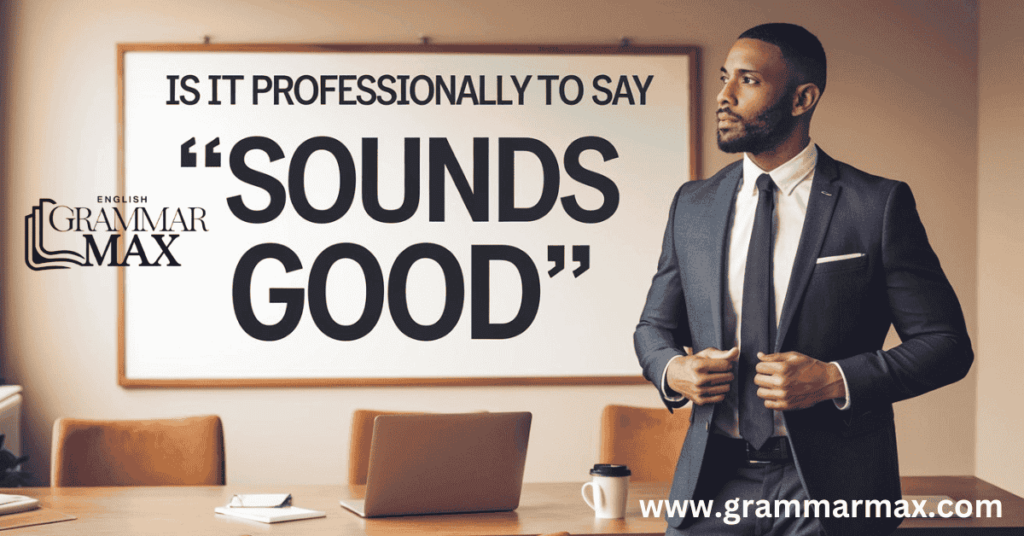
Is it professional to say “sounds good”? While it’s common in casual conversations, “sounds good” can sometimes be too informal in a professional setting. In formal situations, especially when communicating with clients, managers, or during important meetings, using more polished phrases is often a better choice. That said, “sounds good” can work well in less formal exchanges with colleagues or teammates. To maintain a professional tone, having other ways to say “sounds good” for different levels of business communication is helpful.
Frequently Asked Question
How do you say “sounds good” in a professional way?
You can say “That works for me” or “I agree with your plan” for a more professional tone.
What’s another term for “sounds good”?
Another term is “That sounds like a plan” or “I’m on board with that.”
What is the word for when words sound good?
The term is euphony, which refers to the pleasant sound of words.
Is “sounds good” a good reply?
Yes, but it’s more casual; in formal settings, it’s better to use polished alternatives like “I agree” or “That works for me.”
Conclusion
Learning to say “sounds good” professionally improves your communication skills and strengthens positive working relationships. Whether using these phrases in corporate communication or other business interactions, varying your responses keeps your conversation fresh and adaptable. Other ways to say “sounds good professionally” allow you to express approval in a polished, thoughtful manner that aligns with your professional alternatives.
Knowing other ways to say “sounds good” helps maintain a sophisticated style in workplace communication. It ensures that you express yourself clearly while meeting the expectations of your professional realm.

William Henry is a writer for Grammar Max, a blog that focuses on synonyms and phrases. He loves exploring the quirks of the English language and enjoys helping readers improve their vocabulary. William’s articles are easy to read, fun, and full of useful tips for anyone looking to better understand and use English. Whether you’re a student, a professional, or just someone interested in language, William’s writing on Grammar Max makes learning about words and their meanings simple and enjoyable.
